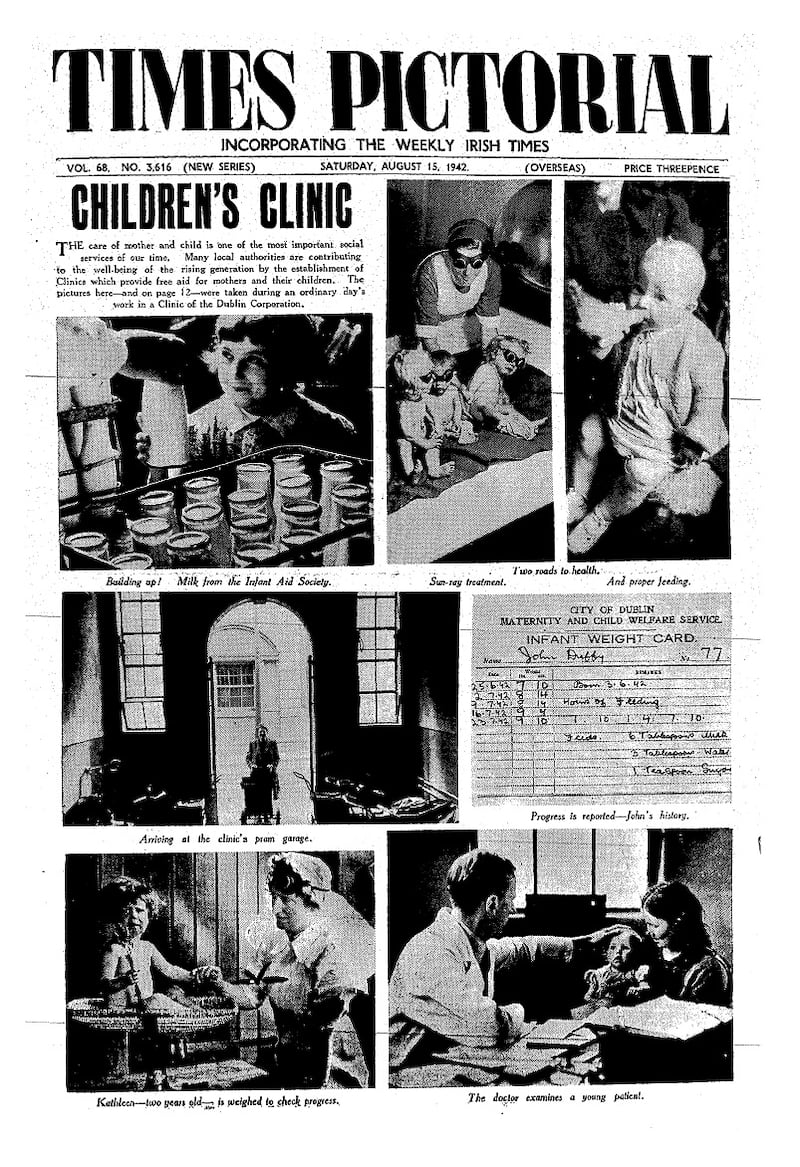In these days of sun-protection factor 50 and skin-cancer warnings, it’s hard to fathom that “sun-ray therapy”, using artificial ultraviolet light, was once hugely popular, prescribed for a range of ailments and illnesses, and to improve health.

Danish professor Neils Finsen was the man credited with introducing actinotherapy – phototherapy – to medicine. He first studied the curative powers of artificial sunlight on patients with lupus, and a January 1896 report cites a British Medical Journal article in which Finsen "describes his results with smallpox patients, whom he confined in a room, illuminated only by red light". In 1903 he was awarded the Nobel Prize for medicine and physiology.
Hearing of his work, Queen Alexandra, a fellow Dane, provided "the first Finsen lamp in Great Britain" to a hospital, and Irish doctors were quick to see its potential. In 1902, readers were told that Dublin's City Hospital for Diseases of the Skin has introduced the Finsen light cure, and had "subjected about 40 patients to this special treatment with gratifying results". (Phototherapy, in strictly controlled measured doses, remains a key treatment in dermatology.)
Sun-ray therapy was embraced by the medical community and the public. Hospitals and clinics opened “light departments”, using ultraviolet rays to treat tuberculosis, skin conditions and diseases of the bones and joints.
The 1920s witnessed the height of its acclaim. In 1928, readers were told that 2,500 people a week were receiving treatment at the London Clinic in Pimlico. That same year a new building opened at Bray’s “Crippled Children’s Home”, which included a room “fitted out for violet ray treatment, and a lamp installed”.
Rickets
In a 1926 lecture for "public health week" about artificial sunlight, Dr Maurice Hayes told the audience that rickets "could be cured by feeding affected children with foods which had been exposed to ultraviolet rays". The low temperatures in Ireland "prohibited the use of outdoor sun baths," he said, but treatment with "artificial rays caused no pain nor inconvenience. The principle diseases treated in this way were the various forms of tuberculosis and tubercular diseases of the bones and joints and of the skin, also rickets and other disease of malnutrition."
Dr Hayes also advised that disease prevention within the general community could be achieved by exposure to the “maximum amount of sunlight and fresh air”. “Town planning should make more provision for open spaces and playgrounds for children, and houses should have large windows . . . but “everyone should have an ultraviolet lamp in his house”. A 1927 article, however, warned of “exaggerated belief in the value of sunbaths and light rays” and called for “cautious insolation”.
The promotion of actinotherapy received its greatest boost in December 1928, when it was used on King George V, who was ill with pneumonia: "the ray therapy treatment would be used as a new method of attack in the difficult struggle which the doctors are waging . . . The new treatment may act as a tonic and increase the bacterial power of the blood."
A “leading London doctor” familiar with the treatment explained to a reporter that it “will not be in the least disturbing . . . The apparatus is placed on a stand at the bedside, and is connected to the ordinary light circuit. While his chest or back is bared to the light the King will wear dark glasses; so will the doctors . . . Probably the ray treatment in the King’s case will begin with one application a day . . . If other than very short exposure were given at the start, there would be harmful results from sunburning.”

The king's treatment received daily coverage in the paper, but what may have gone unnoticed by many readers was the "Racing Gossip" snippet the previous February which revealed that the king's classic filly, Scuttle, was undergoing ultraviolet treatment at Newmarket.
The use of artificial sunlight was also heralded as curative for mental ailments. Advertisements in 1929 for St Patrick’s Hospital (for Nervous and Mental Diseases) announced that a recently-built annexe had been equipped with “ultra violet ray treatment”
Reservations
However, some medical professionals continued to have reservations about the treatments. A 1930 meeting at the British Medical Council discussed experiments by the Medical Research Council which found ultraviolet rays "to be no more effective that a mustard plaster". The findings were disputed by a number of doctors, including Dr Percy Hall, who claimed "no experts had been consulted, and, further, that the doses of rays given were excessive . . . It sometimes happens that light departments are placed in charge of men who know nothing about the subject, with the result that there is failure and discredit in some quarters."
The report's author, Dr Cora Colebrook, defended the findings, agreeing that for some forms of tuberculosis and eye disease "the treatment was beneficial under certain conditions".
However, she added: “A large number of people are convinced that irradiation has definite tonic properties, but so also have a country walk, a cinema and a happy home”. She further complained that the treatment tended to divert energy from the hunt for a real solution of the problem. The debilitated child was the victim of some defect in environment – food, air supply, housing, sleep or parental care and light did not serve “as a corrective to such defect”.

Despite reservations about the efficacy – and the potential harm – of light treatment it continued. In 1938, children were pictured undergoing ray treatment with new apparatus at Cork’s Eye Ear and Throat Hospital. When the Dublin Board of Health opened a new clinic in Dún Laoghaire in 1940 it included UV treatment facilities. And photographs taken at a Dublin Corporation clinic providing free aid to mothers and children in 1942 show babies receiving sun-ray treatment. A 1944 feature about the Curragh Camp’s swimming baths shows soldiers using a ray lamp as part of their keep-fit regimes.
It also remained in favour with at least one head of state. A feature about Stalin in 1951 revealed that the then 71-year-old’s day “starts at noon, with a medical examination, massage, a special sun-ray treatment and vitamin pills”.
- This is part of a series looking at the archives of The Irish Times concerning health.
1) Sleeping secrets: undress in the dark
2) Cooking for invalids: wine and champagne
3) Eat fat, no milk: 19 rules of long living
4) Bloody cures for women's periods
5) Electrical cures to revive sluggish functions
6) Your 'flatulence' explain your 'noises'
7) Curing psoriasis with nude sunbathing
8) Weight-loss: Obesity soap and fat massage
9) Institution Dubliners hoped they'd never enter
10) Cocaine Tooth Powder
11) 'Sun-ray' therapy
12) Men's hair products










